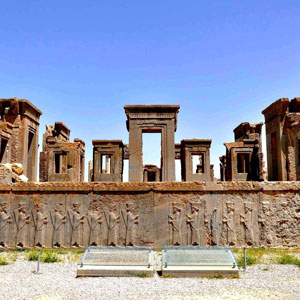 Signin with Google
Signin with Google Signin with Facebook
Signin with Facebook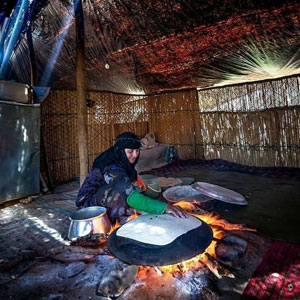
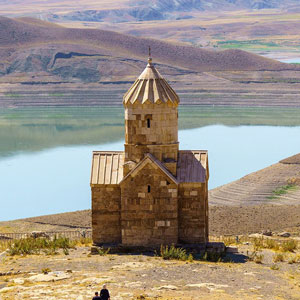
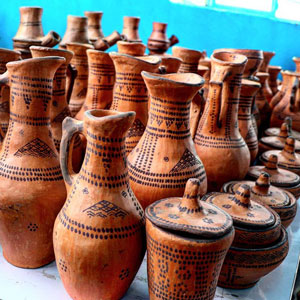 Activities,Places,Culture
Activities,Places,CulturePahlevani and Zoorkhaneh Rituals

Ever wondered about the origin of bodybuilding and fitness? Well, the answer is in the article. Based on the research done in Germany’s Sports University in Köln, Pahlevani sport and ritual was proved to be the oldest bodybuilding sport in history. This research was then published in the sports special edition of Brockhaus Encyclopaedia. You know when research is done, especially by an external and neutral party then the results are scientifically proven and highly reliable. This sport which is an ancient Iranian sport was added to the list of UNESCO’s Immaterial Heritages in 2010.
The Spirit behind Pahlevani Sport
Pahlevan in the Persian language means “Hero” and as you may have already understood, Pahlevani refers to heroism. But the type of heroism which was not only about the physical fitness and strength of the sportsmen but also their humility, courtesy, manliness and generosity. As modesty and clemency were highly regarded as dominant characteristics of real men and heroes.
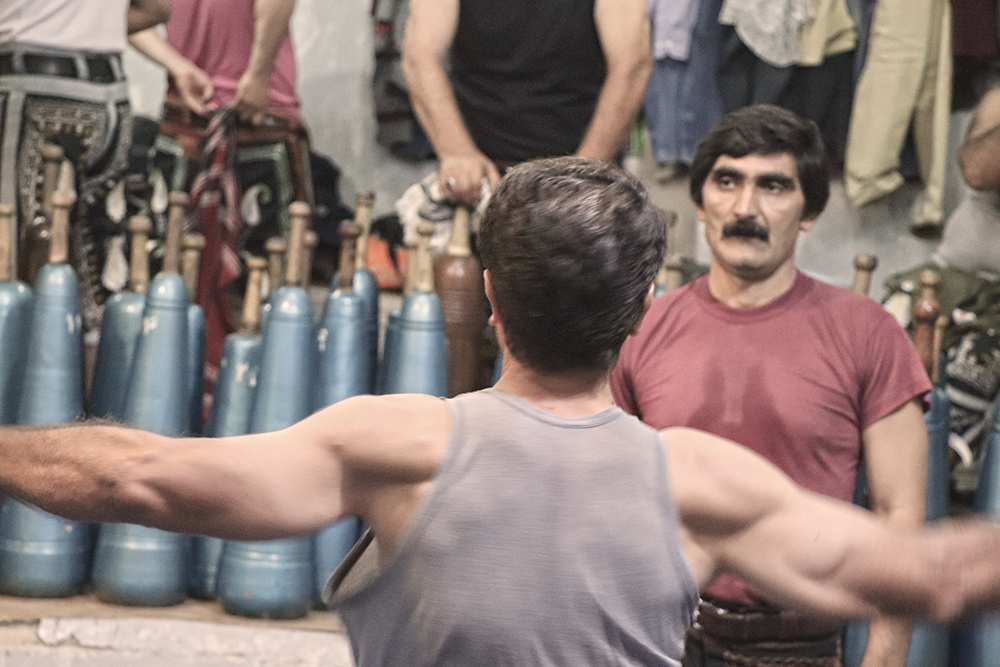
They not only worked on their physical fitness but they worked to improve their spirituality and to be more modest, submissive and generous. The aim was to get closer to their idols who were the mythical heroes and warriors and to be more like them in all of the terms possible. So “heroism” was both an internal and external characteristic and Pahlevani sport was in fact the sport belonging to real heroes having all of the characteristics of a real hero.
Zoorkhaneh consists of two separate parts, “Zoor” and “Khaneh”. If you know their meanings, you’ll realize the logic behind this sport’s name. “Zoor” means “strength” and “Khane” means “a home or a place where something is done”, so if you add them up this is what you can interpret: A place where men could truly enhance their strength by or even without equipment.
According to some historical evidence, Pahlevani (or Bastani) Sport rose from somewhere in Iran’s Azerbaijan and by someone called Pooria-ye-Vali a man of an Azeri origin. However as narrated in Persians ancient mythical stories from the behaviour and nature of Iranian men, this sport can possibly have quite deeper roots in history. Which is why Pahlevani Sport is also known by this name: “Ancient Sport”. The sportsmen doing this ancient sport were highly respected by society for being thankful for their physical strength and courage.
Pahlevani sport maintained its importance throughout history and even after Islam, keeping ancient brotherhood and humility ethics alive same as it has always been kept, with Imam Ali being the centre of their attention as their idol. Gholamreza Takhti, aka “Jahan-Pahlavan” (World’s Hero) was an Iranian wrestler who was highly respected and even after his death he is still regarded as the “Symbol of Heroism” in Iran’s Sports Culture.
As stated in Brockhaus Encyclopaedia, around 1200 years ago, the time when Iran was in a relatively peaceful condition, Iranian soldiers and warriors kept working on their physical fitness. They say that their equipment looked much like battle gears such as maces, bows, shields. The warriors made use of them and anything heavy to improve heir strength both for their own health and possible future battles.
Zoorkhaneh Costumes & Rituals
The most important and distinctive characteristic of this sport is its unique rituals. Zoorkhaneh ritual accompanies a very special type of music and a very particular instrument called “Zarb”. This music is also known as “Zarb-e Zoorkhaneh" which refers to it being particularly costumed for Zoorkhaneh and Pahlevani sport.
This is how the ritual goes: Following each beat of the “Zarb” sportsmen standing in a circular shape, perform specific moves following the word of a person called “Morshed” which means “Master” in Persian. With each of those beats, Morshed evokes the men by citing good characters in the form of poems, ancient or mythical stories such as Ferdowsi’s Shahnameh. Lead by a person standing at the centre of the circle, “Miandar” (Mian: Middle- Dar: keeper), each move is either performed without equipment or with equipment. These equipment include “Mil”( steel Bar), “Kabbadeh”, “Sang” (Stone) and “Takhteh Shena” (Push-up Board).

Mil associates with Mace which was utilized during the ancient times. Kabbadeh is something similar to a “Bow” which has replaced with the original bow soldiers used in the past. “Sang” stands for stone in Persian and are two horseshoes shaped stone pieces that resemble the shields of the soldiers. These 100*70*5 cm stones usually weigh 20 kilograms each and are equipped with two handles. Although Takhteh Shena or push-up board is used in quadruple push-ups of Pahlevani sport it is not one of the main equipment as the push-ups can be done independently.
He, the Morshed is far from a person who beats on the Zarb, sings the verse of ancient poems and traditional songs with Zarb. He is in fact the master of Zoorkhaneh. In the past, Morshed had held the responsibility of training the soldiers and athletes. Sitting outside of the “Gowd” with a wooden stick in his hand, he instructed the fellow champions and wrestlers. Gowd is the name of Zoorkhaneh’s training ground which is a circular area and about 80 centimetres deep.
In the present day, Morshed sits at his chamber outside of the Gowd and near the entrance door, leading the sportsmen with the beats of his Zarb and the ring of his “Zang”. Zang is a bowl-shaped ring made from copper hung over Morshed’s head at his chamber. Zang and Zarb are essential parts of this ancient tradition. You may be asking what the Zang is for. Your answer is in the next paragraph.
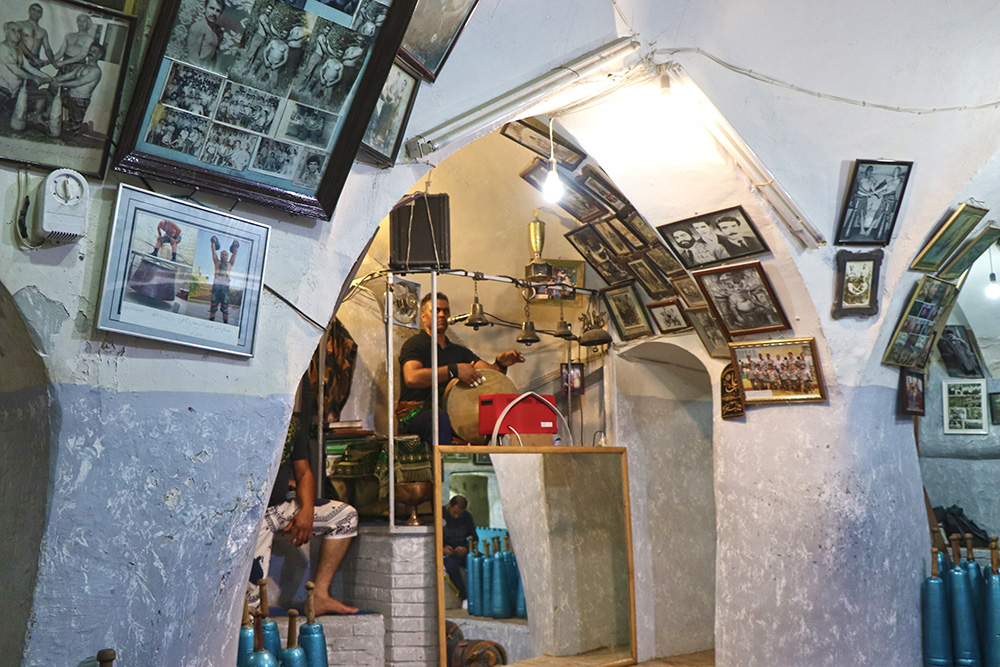
When it comes to the grandees of this ancient sport, things go a little differently regarding the beginning of the ritual. Upon the entrance of a senior into the Zoorkhaneh’s ground, Morshed rings the “Zang” (the Persian word for Ring). But its usage is not only limited to that, but Zang is the harmonizing element of Zoorkhaneh. Each move is defined with a ring and with each ring athletes know what to do and when to shift from one move to the other.
Respect speaks first in this sport and nothing in this sport is done without the permission of the grandees and “Sadats”.(Sadats are people who are somehow related to Prophet Muhammad.)
Their motto is “Sports is to be done to train and nurture body and soul” and according to what Shiites believe Zurkhaneh is Muslims second home.
Pahlavani Sport Moves & Stages
Zoorkhaneh sport consists of various moves but the main moves include push-ups, different types of pedalling, carrying stones as heavy as 80 kilos, spinning, doing stunts and demonstrative moves. Alongside these moves, wrestling is yet another sportsmen practice in Zoorkhanehs as wrestling ground is quite similar to Zoorkhaneh’s circular area with the difference being that wrestling field is at ground level. Due to this resemblance, Zoorkhaneh’s training area makes for a great place to also practice wrestling.

Similar to sports like Karate and Kung-Fu, Pahlavani Sport consists of various stages. The 9 stages of this sport have their own requirements and one has to have special capabilities which are proved through many tests.
Zoorkhaneh sport in modern Iran
Although Zoorkhaneh sport and ritual has lost some of its spiritual importance there are currently 50 Zoorkhanehs active in Tehran which makes for perfect opportunities to take a closer look at this ancient sport and watch their live performances on your next trip to Iran.

By Sara Kheirdoust

